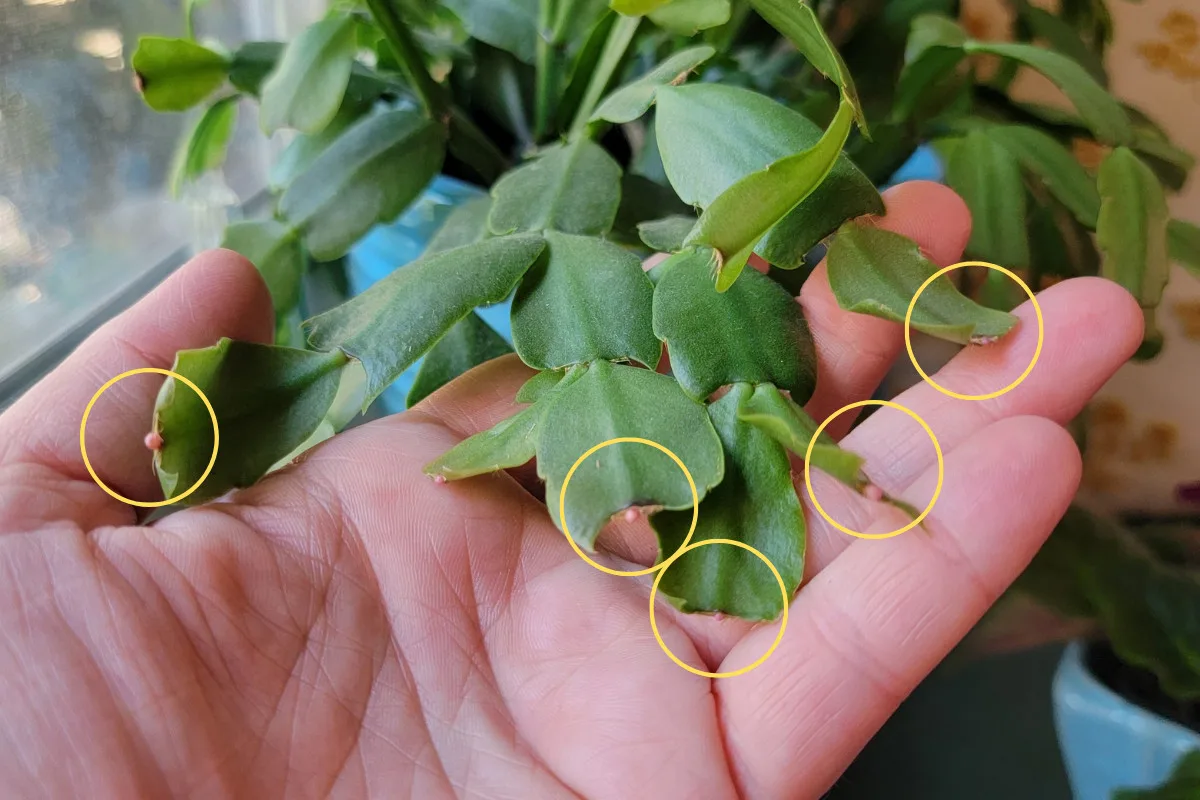
So, you finally discovered the secret to getting your Christmas (or other holiday cactus) to bloom. Do you want to know another secret? You can get it to bloom again a few months later. In fact, you can get it to bloom anytime you want to. Curious? Keep reading.
For many folks, getting their holiday cactus to bloom is a struggle. But once you read Christmas Cactus – How to ID & Care for Everyone’s Favorite Holiday Plant, suddenly you have the keys to a beautiful, blooming Schlumbergera every year.
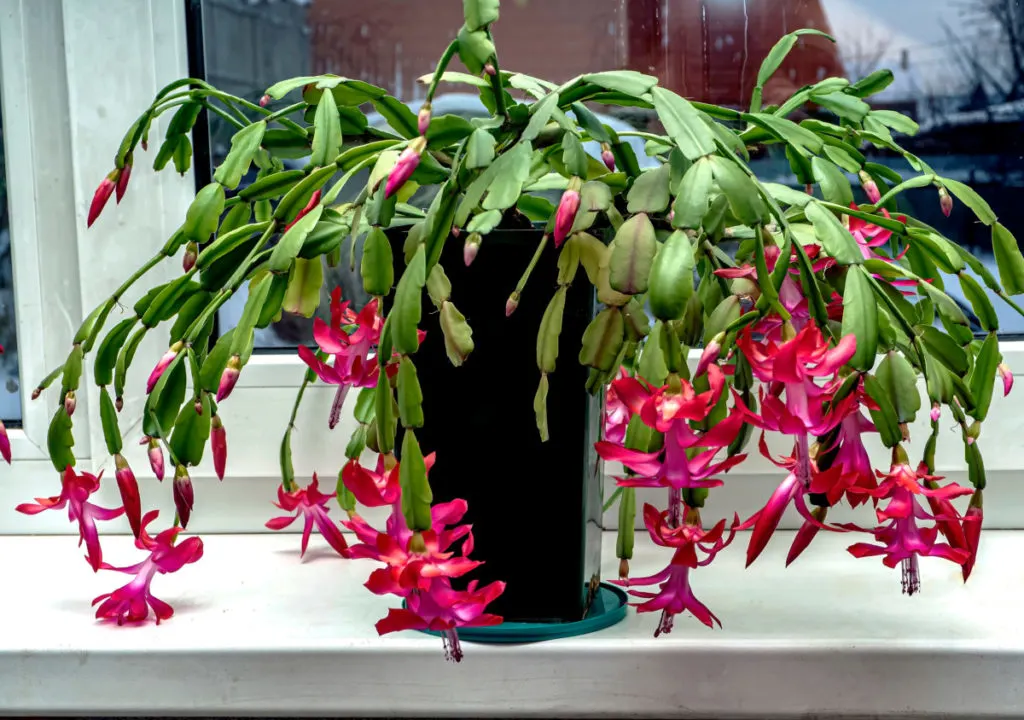
It’s all about understanding the needs of a photoperiod blooming plant, in this case, a short-day photoperiod bloomer.
As days shorten and nights grow long and cool, holiday cacti enter a period of dormancy for a few weeks before putting out buds. Naturally, this process happens at opposite times of year in the Southern Hemisphere.
Regardless, Christmas cactus and all other holiday cactus need to experience this dormant period, or you won’t get blossoms, no matter how pampered your specimen.
So, when you finally get it figured out, there’s nothing quite so rewarding as a spectacular cascade of blossoms, except when you do it again in the same year.
I have several Schlumbergera, one for each holiday: Christmas, Thanksgiving & Easter. I’m used to them blooming, right on cue, around said holidays. So, it was a surprise one summer to walk into my living room and see a plump, pink bud on the end of my Schlumbergera truncata (Thanksgiving cactus).
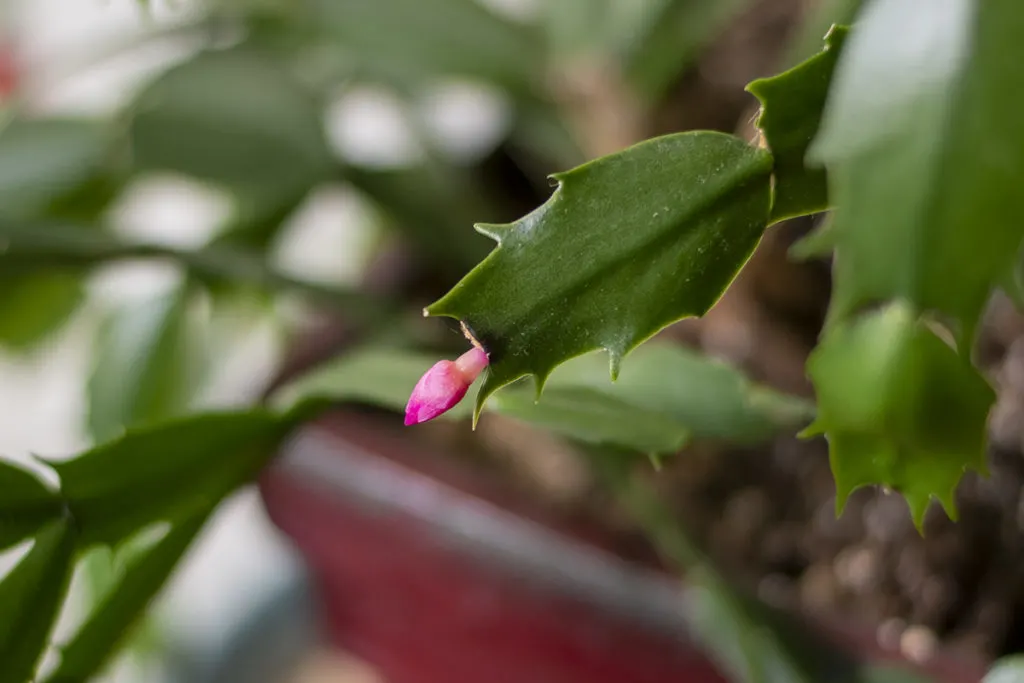
“Huh, okay.”
I went over to inspect it, and sure enough, there were several other smaller buds on the plant. Within a week, my Thanksgiving cactus was blossoming…in July.
It wasn’t the same show-stopping number of blooms that show up during its normal blooming period, but it was still nice.
It was only when the blooms began to fade that I realized we had been having an especially rainy season (darker days), but it was still good and muggy (air conditioning was always on).
My holiday cactus had gone through a mini-dormant period and set blooms because the weather was so gloomy, and my plant was only feet away from the air conditioner.
Force a False Dormancy
Since then, I’ve forced my plants to bloom several times just for the heck of it. And it’s the same process your plants naturally go through, only you’re the one controlling the long, cool nights.
Obviously, in the summertime, this can be a bit tricky.
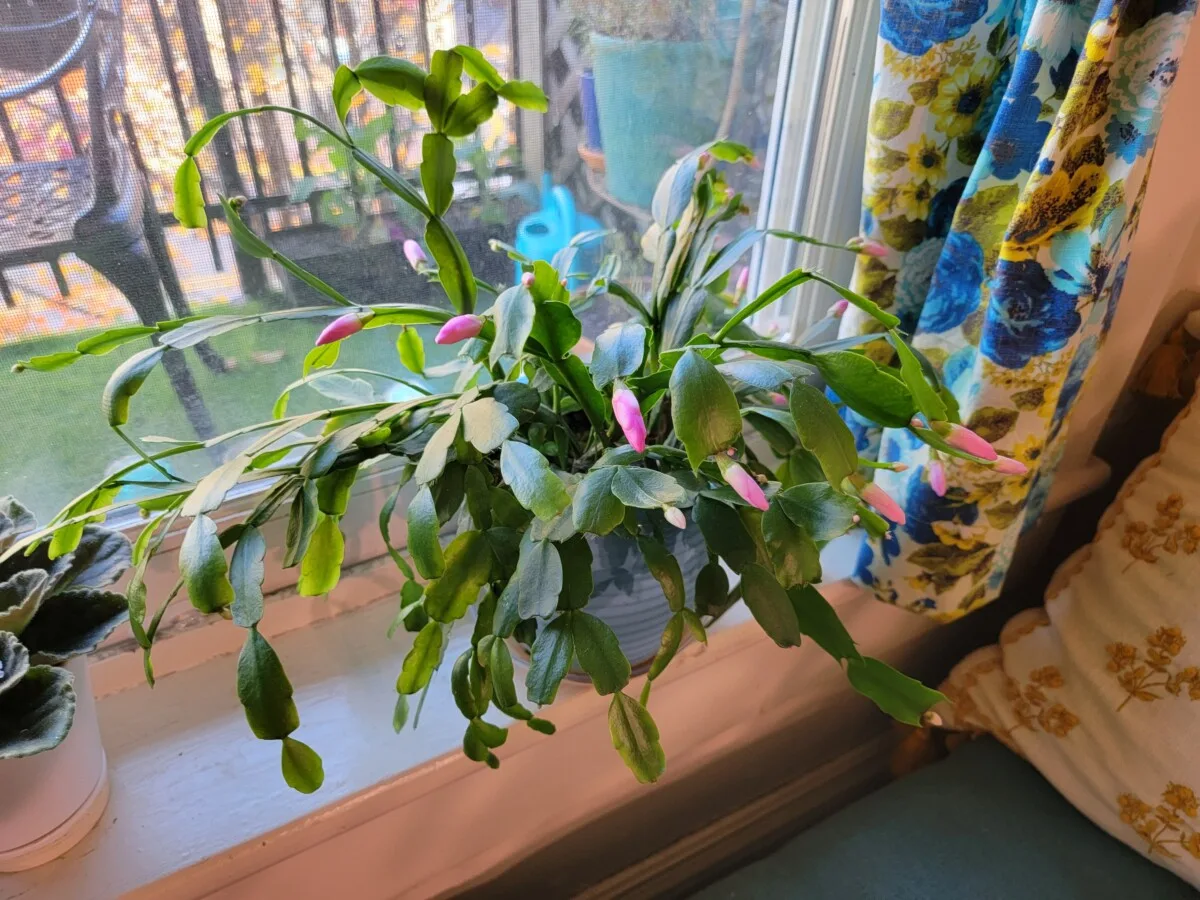
It’s easy enough to ensure your plant experiences shorter days and longer nights; simply move it further away from a window and cover it with a black sheet in the afternoons. Or move it to an interior room that gets less daylight.
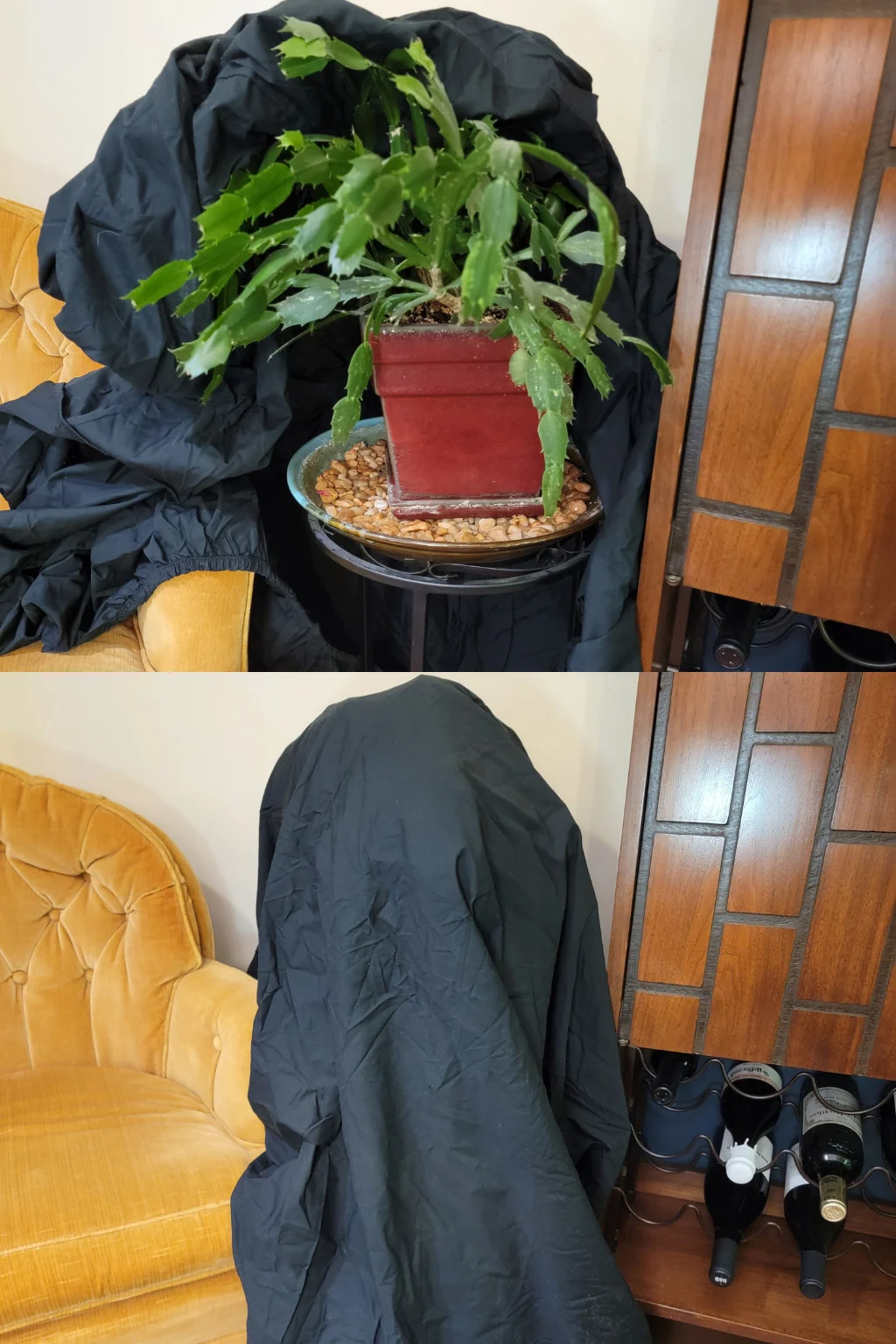
The harder part is the temperature.
Schlumbergera needs to experience nighttime temps of around 55 degrees to enter dormancy and set buds – not the easiest thing to do in the summer. You can do what I did and set it near a window-unit air conditioner; just be sure it’s not directly in the cold air path. Relocating your plant to a cool basement is another option.
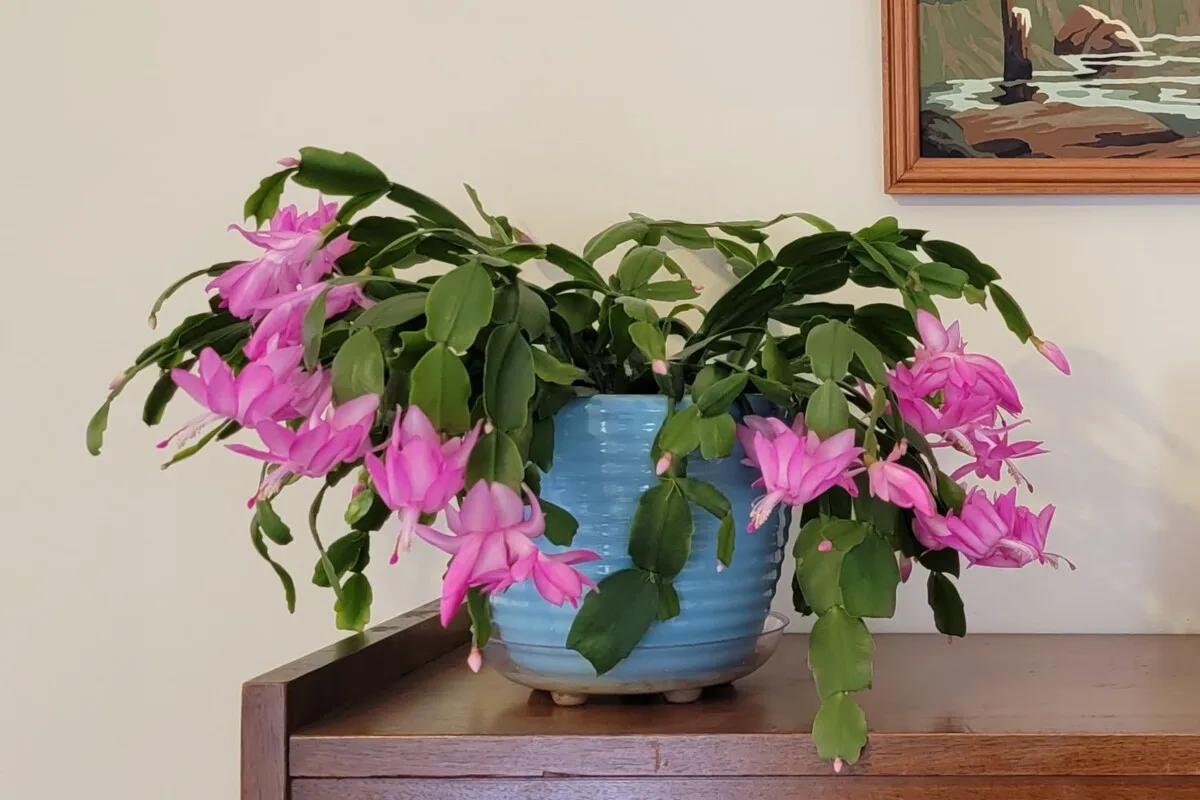
You’ll need to mimic these conditions for roughly 3-4 weeks. You should start to notice new buds at some point. You likely won’t get the same number of blooms that you normally would during the plant’s natural blooming cycle, but it’s still a nice display, regardless.
If you’re going to force a dormant period, it’s important to ensure your plant has enough energy.
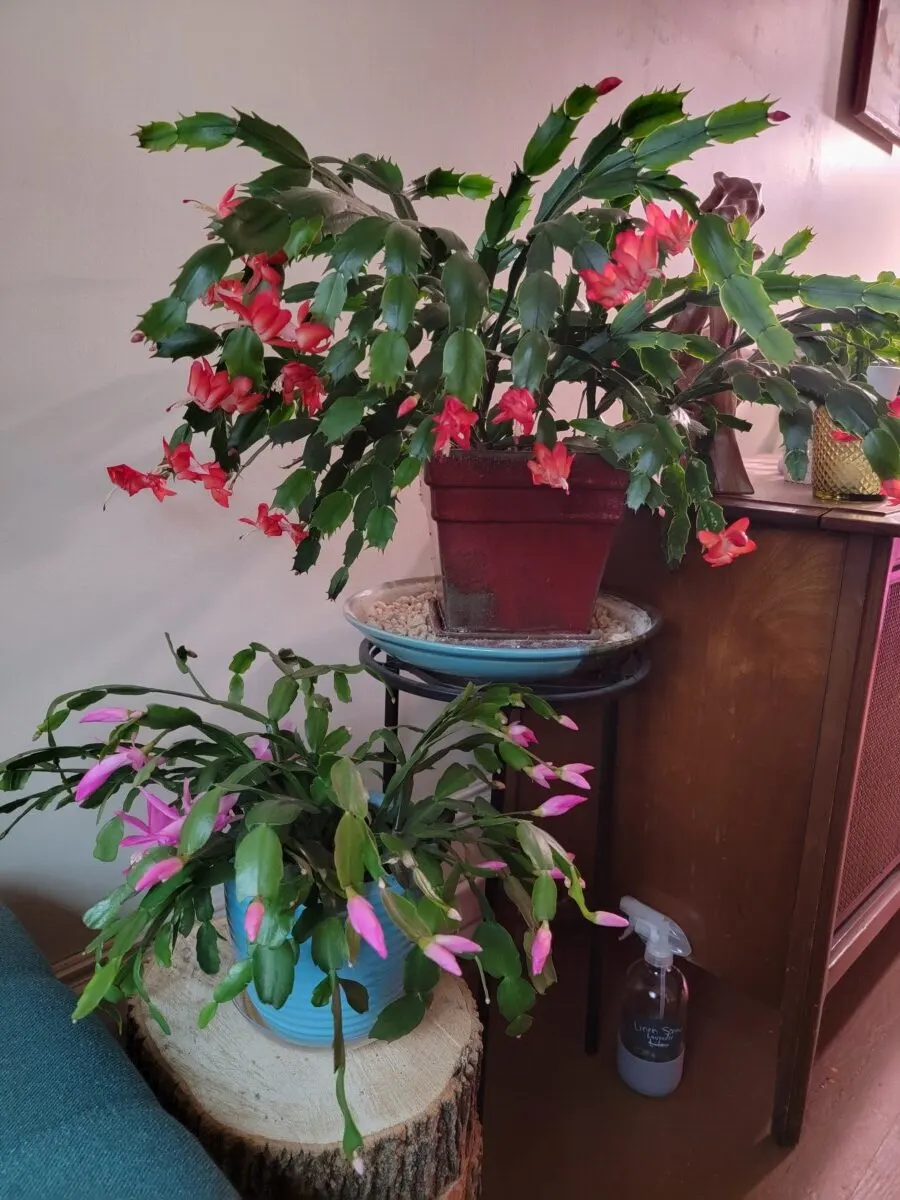
Wait at least a month or two after all the blooms have faded before you try to get it to bloom again. You’ll also need to feed your plant with a fertilizer that has a higher phosphorous content.
I always give my Schlumbergera Schulz African Violet Plus starting in late summer and into the fall. It seems to be the perfect fertilizer for bloom development. Use this starting a month before you force dormancy. While the plant is actively blooming, use a balanced houseplant fertilizer, such as Dr. Earth’s Pure Gold Pump & Grow All Purpose Plant Food.
Related Reading: 7 Secrets to Keep Your African Violet Blooming All Year Long
How Often Can I Get My Plant to Bloom?
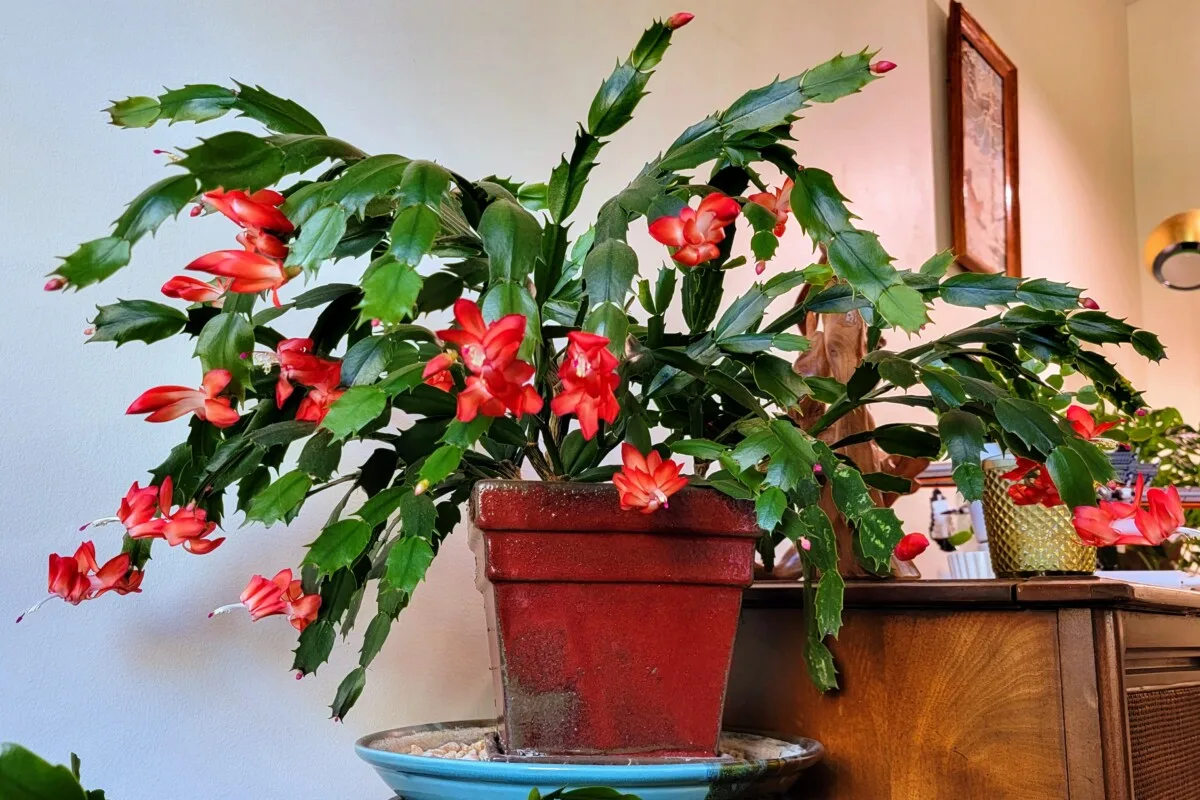
To be honest, I’m not exactly sure how often you could trick your plant into forced dormancy. I’ve managed to get my Thanksgiving cactus to bloom three times in one year. My Christmas cactus has bloomed twice in one year. But after a certain point, my efforts produced diminishing returns.
It took a lot more work, moving plants and remembering to cover them than simply letting them take their natural course and setting them up for a natural dormant period in the fall. But it was still a fun experiment.
Of course, it also meant my plants grew very little in size that year, and I fed them more frequently to replenish nutrients lost to multiple sets of buds.
Give It a Rest
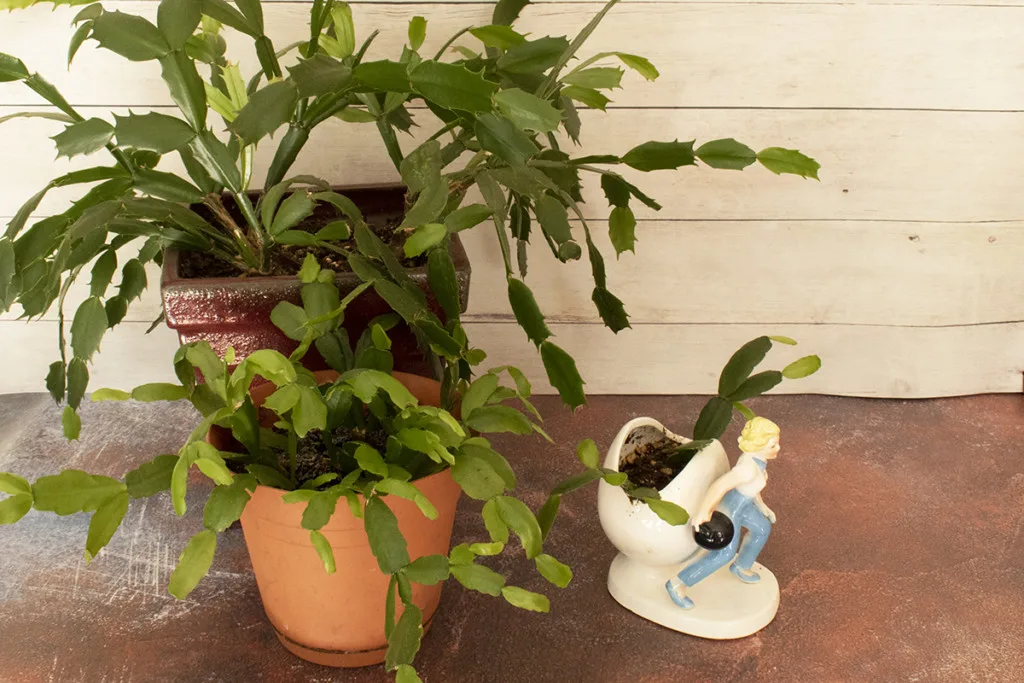
Now that you know how to force your Christmas cactus to rebloom, the inevitable question is, should you? If you’re providing adequate nutrients for the plant to replenish its stores and want to invest the extra work involved in mimicking shorter days and long, cool nights, go for it. You could easily get new blooms every three or four months.
However, if you have to keep moving your plant and remembering to cover and uncover it, suddenly, the whole process becomes work.
Eventually, though, it’s a good idea to let your plant return to its natural cycle. By forcing it to bloom, you’re cutting short its natural rest and growth period. You may enjoy more blooms, but your plant probably won’t grow much.
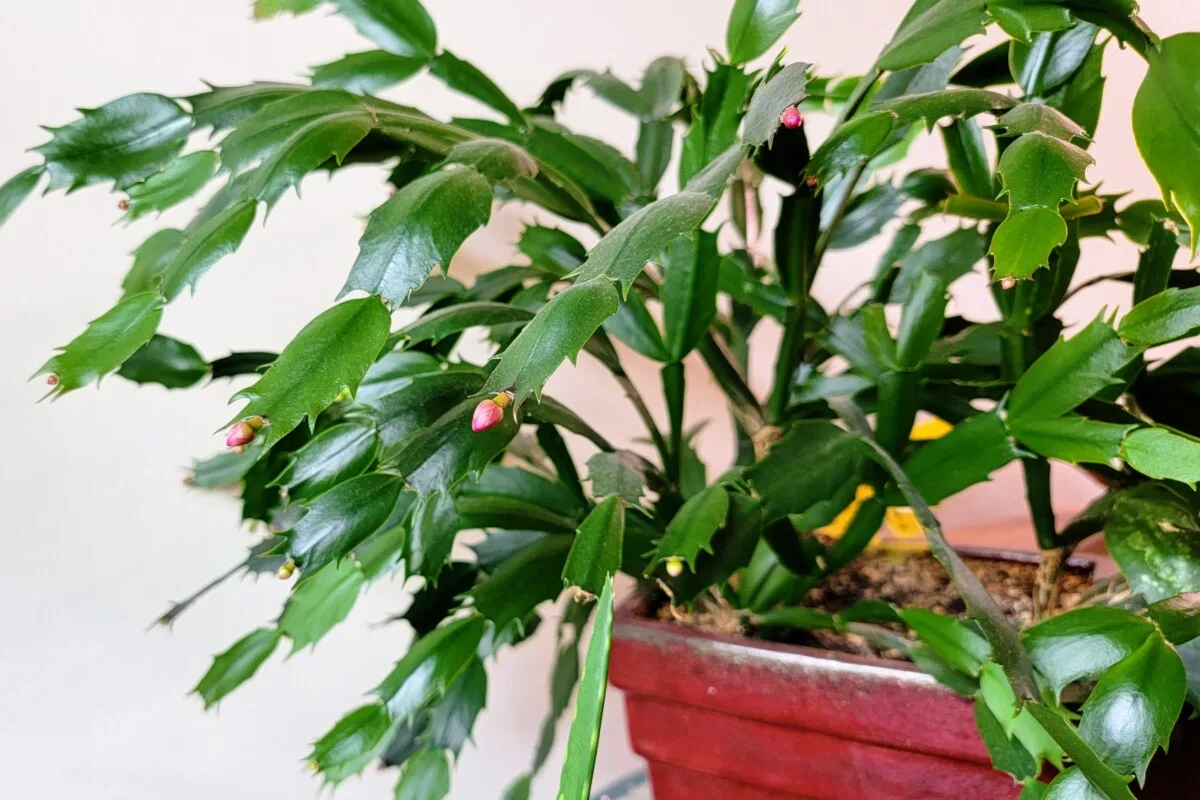
Related Reading: How & When to Prune Your Christmas Cactus (& Why You Need To)
Opt for the best of both worlds: let your plant bloom naturally one year, then force blooms more frequently the next year—cycle between these two years. Or rest in the knowledge that you know how to get your plant to bloom during its expected bloom time and be happy with that.
Read Next:

Get the famous Rural Sprout newsletter delivered to your inbox.
Including Sunday ramblings from our editor, Tracey, as well as “What’s Up Wednesday” our roundup of what’s in season and new article updates and alerts.


